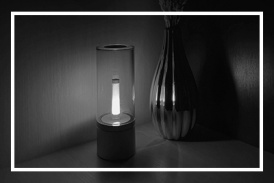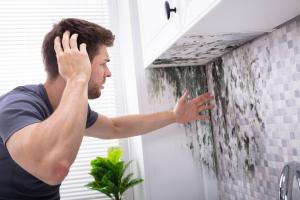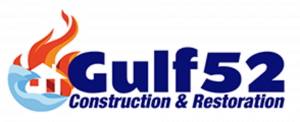Post-Remediation Verification Plays a Critical Role in Mold and Contaminant Safety, Says Gulf 52 President
According to Earl Carr, Jr., president of Gulf 52 in Hammond, Louisiana, PRV is a non-negotiable process for confirming that remediation efforts meet established standards.
“Post-remediation verification ensures that the affected areas meet clearance criteria and that remediation was performed correctly,” said Carr. “It serves as both a final quality check and a form of legal documentation in many regulated industries.”
Post-remediation verification involves a comprehensive evaluation of cleaned or restored areas following mold or biohazard remediation. This assessment typically includes a combination of visual inspections, moisture measurements, air sampling, surface testing, and laboratory analysis to determine whether contaminants have been successfully removed and that no ongoing risk remains.
In regions like Southeast Louisiana, where high humidity and storm-related flooding frequently contribute to mold growth, PRV has become a standard requirement in both commercial and residential restoration projects. While remediation itself focuses on removal and treatment, verification confirms that the remediation efforts achieved their intended outcome and that the space is safe for occupancy.
Independent third-party environmental specialists are often brought in to conduct PRV assessments. This separation helps avoid conflicts of interest and ensures that findings are unbiased. Clearance criteria may include quantitative thresholds based on airborne mold spore counts, surface sample results, and the absence of visible contamination or musty odors.
PRV can be particularly important in facilities with heightened sensitivity requirements, such as hospitals, schools, public buildings, and food-handling areas. Regulatory agencies and insurance carriers may require documented evidence of PRV before authorizing re-occupancy or final payment on restoration claims.
In addition to health and safety benefits, PRV can serve as legal protection in the event of disputes over contamination. Real estate transactions, landlord-tenant issues, and contractor liabilities are increasingly dependent on third-party documentation that demonstrates that remediation was conducted in accordance with industry protocols.
Standard guidelines for PRV are outlined in industry documents such as the IICRC S520 (Institute of Inspection Cleaning and Restoration Certification) and EPA mold remediation protocols. These standards recommend that PRV be conducted after a sufficient drying period and before reconstruction begins, ensuring that no hidden moisture or microbial growth remains behind walls or within materials.
Failure to conduct PRV can result in costly rework, continued occupant complaints, and increased liability exposure. In some cases, re-contamination may occur due to overlooked moisture intrusion points, incomplete removal of contaminated materials, or improper use of containment systems during cleanup. PRV is designed to catch these failures before they evolve into larger health or legal issues.
Carr notes that in recent years, post-remediation verification has evolved from an optional service to an essential safeguard.
“In the past, some property owners viewed PRV as a formality. That has changed. Now, it’s considered a critical step in the remediation process, especially in areas affected by repeat flooding or structural vulnerability,” said Carr.
PRV procedures can vary depending on the type of contamination, the scale of the project, and the intended use of the building. In mold remediation, for example, air sampling devices may be used to collect airborne spore levels both inside and outside the containment zone for comparison. Surface samples may be collected using swabs or contact plates in areas that were cleaned or encapsulated.
A successful PRV report generally includes a narrative summary of the inspection, environmental readings, photographs, laboratory data, and a final clearance determination. For construction projects or public institutions, these reports are often archived and submitted to stakeholders or regulatory bodies.
Post-remediation verification also plays a role in project scheduling. Without proper clearance, reconstruction may be delayed, and project timelines can be impacted. For contractors and restoration teams, passing a PRV inspection signals that the area is safe for reconstruction and reoccupancy.
The increasing frequency of severe weather events across the Gulf Coast has led to a growing awareness of the importance of effective remediation and thorough verification. Property owners, contractors, and insurers are now more likely to build PRV into project budgets and timelines from the outset.
Earl Carr, Jr. and the Gulf 52 team continue to emphasize post-remediation verification as a cornerstone of responsible disaster recovery work. Their focus remains on process transparency, safety assurance, and adherence to best practices that reduce long-term risk for both property owners and contractors involved in remediation work.
Morgan Thomas
Rhino Digital, LLC
+1 504-875-5036
email us here
Visit us on social media:
Facebook
Legal Disclaimer:
EIN Presswire provides this news content "as is" without warranty of any kind. We do not accept any responsibility or liability for the accuracy, content, images, videos, licenses, completeness, legality, or reliability of the information contained in this article. If you have any complaints or copyright issues related to this article, kindly contact the author above.
Greaseproof Paper Sheets Market to Hit USD 2.3 Billion by 2035, Driven by Demand for Sustainable Food Packaging | FMI
Infosearch BPO’s Comprehensive Back Office Services to Support Global Businesses
LeanLaw Announces Strategic Integration with NetDocuments, Creating a Unified Legal Workflow for Law Firms
Kalendarium
Więcej ważnych informacji
 Jedynka Newserii
Jedynka Newserii

 Jedynka Newserii
Jedynka Newserii

Infrastruktura

Blackout w Hiszpanii i Portugalii ujawnił braki europejskiego systemu elektroenergetycznego. Niezbędna modernizacja sieci i połączeń między krajami
Komisja Europejska musi wyciągnąć wnioski z problemów z dostawami energii w Hiszpanii i Portugalii. Zapowiada też podjęcie działań, aby uniknąć takich poważnych blackoutów w przyszłości. Eksperci apelują przede wszystkim o inwestycje w modernizację sieci, by była ona gotowa na większą liczbę źródeł odnawialnych, a także w rozbudowę połączeń między państwami członkowskimi, dzięki czemu łatwiej będzie reagować na kryzysy.
Problemy społeczne
37 proc. Ukraińców nie wie, jak zaszczepić dziecko w Polsce. Potrzebna większa edukacja w tym zakresie

Choć trzech na czterech uchodźców z Ukrainy darzy polski system ochrony zdrowia dużym zaufaniem, to 21 proc. z nich ma problem z zaufaniem do samych szczepień. To dlatego wiele ukraińskich mam podejmuje decyzję o nieszczepieniu dziecka. Dużym wyzwaniem jest więc zwiększanie ich świadomości na temat korzyści płynących ze szczepień dla zdrowia jednostek i całej populacji, a także wyjaśnianie wątpliwości związanych z ewentualnymi skutkami ubocznymi. Tę rolę edukacyjną musi wziąć na siebie polski personel systemu ochrony zdrowia.
Telekomunikacja
Dyrektywa unijna zmienia podejście do cyberbezpieczeństwa. W Polsce trwają prace nad jej wdrożeniem

Według zapewnień rządu w tym kwartale zakończą się rządowe prace nad nowelizacją ustawy o krajowym systemie cyberbezpieczeństwa, która wdroży do polskiego prawa zapisy dyrektywy NIS2. Będzie to mieć istotne znaczenie dla kształtowania polityk cyberbezpieczeństwa przez duże i średnie podmioty zaliczane do kategorii kluczowych i ważnych. Choć pojawiają się głosy krytyczne, sugerujące, że regulacje są zbyt daleko idące, to eksperci od cyberbezpieczeństwa są przekonani, że akurat w tym obszarze mogą one przynieść szereg korzyści, zwłaszcza we współczesnych warunkach geopolitycznych.
Partner serwisu
Szkolenia

Akademia Newserii
Akademia Newserii to projekt, w ramach którego najlepsi polscy dziennikarze biznesowi, giełdowi oraz lifestylowi, a także szkoleniowcy z wieloletnim doświadczeniem dzielą się swoją wiedzą nt. pracy z mediami.








.gif)

 |
| |
| |
|